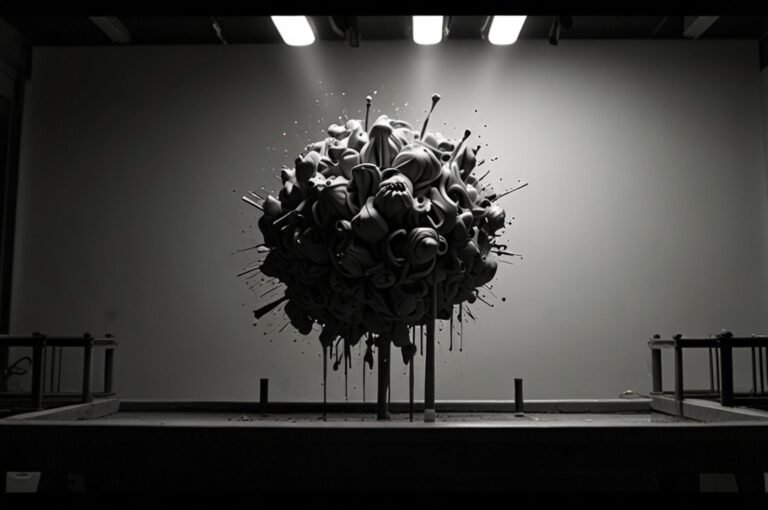How to Keep Track of Your Creative Ideas Effectively
Creativity often strikes when we least expect it—during a conversation, while taking a walk, or even in the middle of the night. Unfortunately, many great ideas are fleeting, and without an effective system to capture them, they can easily be lost. In this guide, we’ll explore practical strategies for organizing your creative ideas so you can make the most of your inspiration. By using tools such as creativity journals, digital note-taking apps, and vision boards, you can ensure that your best ideas are always accessible when you need them.
The Importance of Capturing Creative Ideas
Creative ideas are the seeds of innovation, and keeping track of them is crucial for anyone looking to nurture their creativity. Whether you’re an artist, a writer, an entrepreneur, or just someone who wants to capture moments of inspiration, organizing your ideas can help prevent those brilliant thoughts from disappearing into oblivion. Consistent and effective idea tracking can also help you revisit concepts, make connections between ideas, and ultimately transform them into tangible projects.
Tools for Tracking Creative Ideas
There are many different tools you can use to capture and organize creative ideas. Below, we’ll explore some of the most effective methods, both analog and digital, to help you decide which approach works best for you.
1. Creativity Journal
A creativity journal is a tried-and-true method for capturing ideas in a physical format. Many creative individuals prefer the tactile experience of writing down their thoughts by hand, which can be beneficial for memory and reflection.
- Benefits: Journaling allows for freeform expression, enabling you to write, doodle, or sketch whatever comes to mind. It provides a sense of ownership over your ideas, and you can add to it anytime.
- Tips for Use: Keep your journal easily accessible, so you can jot down ideas whenever inspiration strikes. Dedicate a few pages to brainstorming and idea development, and use tabs or sticky notes to help organize different themes or categories.
2. Digital Note-Taking Apps
For those who prefer a more structured or portable approach, digital note-taking apps offer the ability to capture and organize ideas seamlessly across devices. Apps like Evernote, Notion, and Microsoft OneNote are popular for their flexibility and organizational features.
- Benefits: Digital note-taking tools allow you to sync your notes across multiple devices, making it easy to add ideas wherever you are. These apps also support multimedia content, such as images, audio recordings, and links, allowing you to add context to your ideas.
- Tips for Use: Set up different folders or tags to categorize your ideas, making it easier to find them later. Utilize voice memos if you’re on the go, and make sure to review your notes regularly to turn raw ideas into actionable plans.
3. Vision Boards
A vision board is a visual tool that helps you keep track of your creative ideas and stay inspired. This method is especially useful for people who are visually oriented and prefer to see a collection of related concepts in one place.
- Benefits: Vision boards help visualize your ideas and can serve as a powerful reminder of your goals and inspirations. They are also great for organizing concepts in a way that highlights connections between different themes.
- Tips for Use: Create a vision board using magazine clippings, printed images, or digital platforms like Pinterest or Canva. Regularly update your vision board to reflect new ideas and goals, and place it somewhere you’ll see it often, ensuring it remains a source of motivation.
4. Mind Mapping Tools
Mind mapping is an excellent way to brainstorm and organize creative thoughts. By visually connecting different concepts, you can uncover new relationships between ideas and expand upon them in a structured way.
- Benefits: Mind maps are great for brainstorming and developing complex ideas. They help you visualize connections and explore various aspects of a concept in an organized manner.
- Tips for Use: Use digital tools like MindMeister or Coggle to create easily editable mind maps. Alternatively, create a hand-drawn mind map if you enjoy the process of sketching out your ideas manually.
Techniques to Keep Your Ideas Organized
While tools are helpful, the methods you use to organize your ideas can make all the difference. Here are some techniques that can help you stay on top of your creative thoughts.
1. Categorize Your Ideas
Dividing your ideas into categories can help keep your notes organized and easy to navigate. For example, you might create categories based on projects, themes, or even moods. This approach allows you to quickly find ideas related to a specific topic.
2. Use a Capture and Review System
The capture and review method is all about getting your ideas out of your head and into a system where they can be reviewed and acted upon. Spend a few minutes each day or week reviewing your notes to identify the ideas worth developing further. This regular review will help keep your creative projects on track.
3. Combine Analog and Digital Methods
There is no one-size-fits-all solution for tracking creative ideas, and combining multiple methods can provide the best results. For instance, you can use a creativity journal to capture your initial thoughts and later transfer them to a digital app for better organization and accessibility.
4. Set Up Reminders for Follow-Up
Often, a creative idea needs further development before it becomes actionable. Use reminders to prompt follow-up on specific ideas. Digital apps allow you to set reminders or tasks so that you don’t lose track of the next steps for a creative concept.
Overcoming Common Challenges
While keeping track of ideas is important, it can also be challenging, especially if you’re dealing with creative overload or lack of motivation. Here are some ways to overcome common obstacles:
- Overwhelmed by Ideas: If you find yourself with too many ideas, focus on prioritizing them based on their potential or urgency. Creating a top 5 list can help you identify the ideas you want to pursue first.
- Lack of Follow-Through: If you struggle with turning ideas into actions, break down your creative projects into small, manageable tasks. This can make the process feel less overwhelming and increase your chances of success.
- Motivation: To stay motivated, revisit your vision board or journal regularly. Reminding yourself of the excitement and inspiration behind your ideas can reignite your passion and drive.
Conclusion: Keep Your Creativity Flowing
Tracking your creative ideas effectively can make the difference between having a fleeting thought and turning that thought into a groundbreaking project. Whether you use a creativity journal, digital apps, vision boards, or a combination of all three, the key is to find a system that resonates with you and fits seamlessly into your lifestyle. By keeping your ideas organized and accessible, you’ll be better equipped to harness your creativity and bring your visions to life.
Don’t let your brilliant ideas slip away—develop a routine for capturing, organizing, and revisiting them. Your next big breakthrough could be just a well-organized note away.






